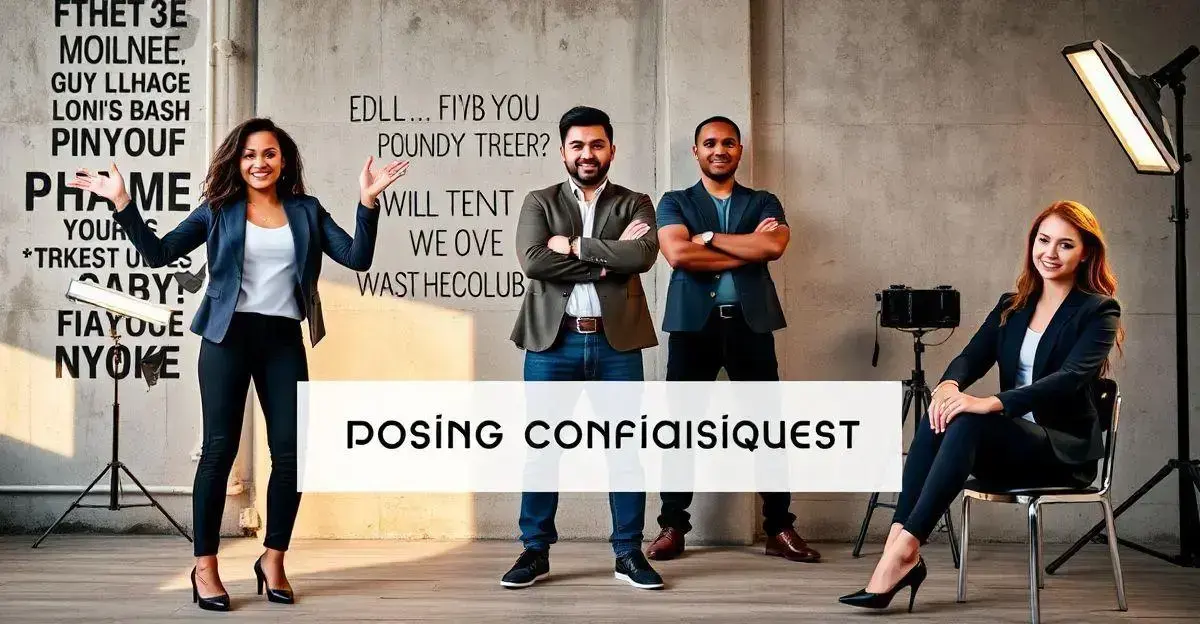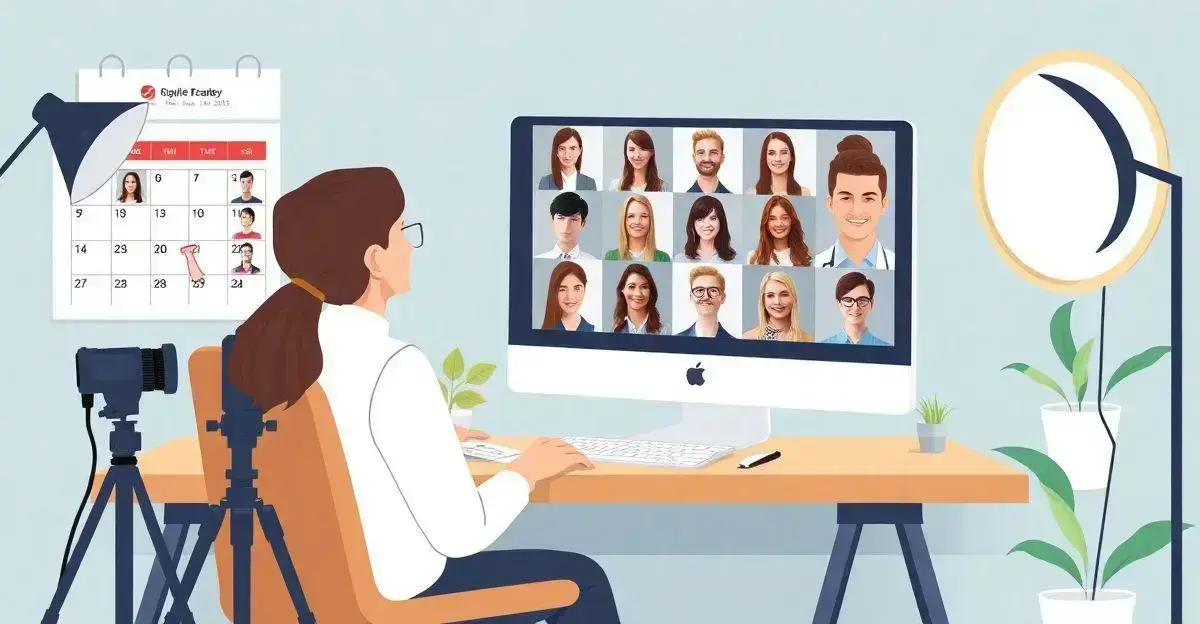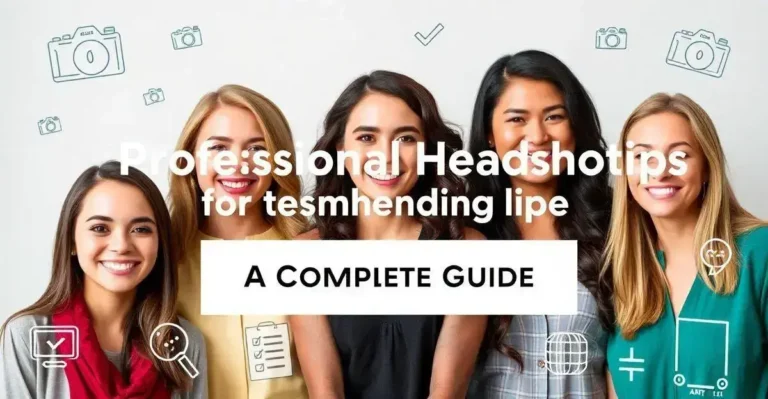When it comes to first impressions, a professional headshot can make all the difference.
Professional headshot tips can guide you in creating an impactful image that resonates with your audience.
Investing time and effort into getting your headshot right not only boosts your confidence but also enhances your personal brand.
Understanding the Importance of a Professional Headshot
In today’s digital world, having a professional headshot is essential. A quality headshot sets you apart on social media, in job applications, and for networking, conveying both professionalism and personality, and leaving a lasting impression.
When potential clients or employers view your headshot, it influences their perception of you. A high-quality image establishes trust and credibility, which are key for building professional relationships. More than just a photo, it represents your brand’s visual identity.
Since your headshot is often the first point of contact, especially online, it needs to reflect who you are and what you stand for. Investing in a good headshot is an investment in your career. Your appearance, demeanor, and the overall feel of the photo contribute to showcasing your professionalism.
In summary, a well-executed headshot is a valuable tool for anyone aiming to strengthen their professional presence. Ensure it’s memorable and aligned with your personal and professional brand.
Choosing the Right Photographer for Your Headshot

Choosing the right photographer for your headshot is crucial to creating a polished, professional image. A skilled photographer knows how to highlight your best features while capturing your personality, which helps your headshot stand out.
Start by seeking someone experienced in headshot photography with a portfolio that showcases their work. Reading reviews or getting recommendations from colleagues or friends can also help you find a reputable photographer. A headshot specialist understands lighting, angles, and poses that will make you look confident and approachable.
Discuss your vision with the photographer and ask about their process to ensure they understand your needs. Consider the session’s location as well—some photographers offer studio sessions, while others prefer outdoor settings.
Each option has its own advantages, so think about which setting aligns best with your personal brand. Comfort is also key; a photographer with a friendly demeanor can help you feel more relaxed, resulting in a natural, authentic shot.
Finally, communicate your expectations clearly. Share examples of styles you like and dislike, as this can lead to better results. Choosing the right photographer is a valuable step toward enhancing your professional presence.
Wardrobe Choices for Your Professional Headshot
Choosing the right wardrobe for your professional headshot is key to making a good impression. Wardrobe choices should reflect your personal brand and profession. Opt for colors that complement your skin tone and convey the message you want to send.
Solid colors often work best in headshots, as they are less distracting and keep the focus on your face. Neutral tones like white, black, or gray can be excellent choices, giving you a clean and professional look. If you want to add a bit of personality, consider incorporating a pop of color, but be mindful to avoid overly bright or neon shades.
Wear clothing that fits well and is comfortable, as this will help you look more relaxed in your photo. Avoid busy patterns or logos, as they can take attention away from your expression. It’s best to stick to classic styles that won’t go out of fashion quickly.
Also, think about the message you want to convey. If you work in a creative industry, you might opt for something a bit more casual or colorful. On the other hand, conservative fields like law or finance usually call for more formal attire. Accessorizing can also make a difference; simple accessories can enhance your look without overwhelming it.
In summary, your wardrobe plays a significant role in the impact of your headshot. Carefully selecting your clothing will help you present your best self professionally.
Posing Techniques to Look Confident

Posing techniques can significantly impact how you appear in your professional headshot. Looking confident is essential, as it reflects your professionalism and personality. Start by standing or sitting up straight; good posture not only helps you appear taller but also presents a strong image.
To achieve a natural look, practice relaxing your shoulders. Tension can squeeze your face and make you look uncomfortable. A slight angle towards the camera often works better than facing it directly, as it adds a little depth to your photo. Engage your eyes—a genuine smile or a confident gaze can make all the difference.
Use your hands wisely; placing one hand on your hip or lightly touching your chin can create interesting lines and shapes, making the shot more visually appealing. Experiment with angles to find your best side. Often, turning your head slightly can enhance your features and lead to a more flattering photo.
Moreover, try incorporating movement into your pose. A slight shift in position or a gentle turn of your head can prevent a stiff appearance. Remember, confidence comes from within—choose a pose that feels comfortable to you, as it will show in your expression. Practice makes perfect, so consider taking some test shots before the actual session.
Lighting Tips for a Flawless Headshot
Lighting plays a crucial role in achieving a flawless headshot. Good lighting can enhance your features and help convey the right mood. The best lighting for headshots is natural light, which is soft and flattering. Aim to shoot during the golden hour, just after sunrise or before sunset, when the light is warm and diffused.
If you are indoors, position yourself near a large window for the best natural light. Avoid harsh overhead lights, as they can create unflattering shadows on your face. If you must use artificial lighting, consider softbox lights, which mimic natural light and reduce shadows.
Three-point lighting is also an effective technique. This setup includes a key light, fill light, and backlight to create depth and dimension.
When using any type of light, ensure it is directed towards your face at a slight angle to illuminate your eyes and features without causing glare. Experiment with different positions and angles of the light to find what works best for you.
If you have the opportunity, bringing in an assistant to adjust lights can also enhance the results. Remember, good lighting can be the difference between a good headshot and a great one.
Background Selection for Professionalism

Selecting the right background for your professional headshot is essential for conveying the right message. A clean and simple background helps keep the focus on you while still adding context to the photo. Ideally, choose backgrounds that are not distracting and allow your features to stand out.
Neutral colors like gray, white, or soft pastels work well in most situations. These colors create a professional appearance and provide balance. If your brand has specific colors, consider incorporating those to reflect your identity without overwhelming the image.
Outdoor settings can also be effective, offering natural textures and lighting. However, choose locations that are not too busy, as they may divert attention from your face. Look for spots with soft, diffused light, such as shaded areas.
Make sure to avoid backgrounds that clash with your clothing or create odd shadows. Test out a few options before the shoot. A great background can enhance your headshot and help you connect with your audience effectively.
Editing Your Headshots: What to Consider
Editing your headshots properly can significantly enhance your professional image. Editing involves adjusting various elements such as brightness, contrast, and color balance to present a polished version of yourself.
First, ensure the lighting is correct; good editing can brighten dark areas and soften harsh shadows that detract from your face.
Next, consider cropping the photo appropriately. A well-cropped image should focus on your head and shoulders, drawing immediate attention to your facial expressions. Avoid overly tight cropping, as it can feel cramped.
Skin retouching is also essential but should be done with care. Aim for a natural look; overly heavy editing may create an unrealistic appearance. Remove blemishes or distractions, but don’t alter your features too dramatically. Keep the integrity of your appearance while enhancing your natural beauty.
Lastly, compare the edited version with the original. Ensure that your edited headshot still looks like you. A successful edit retains your likeness while improving its visual appeal. With the right adjustments, your headshot can become a powerful tool in your professional branding.
Updating Your Headshot Regularly

Updating your headshot regularly is important for maintaining a relevant professional image. Regular updates ensure that your photo reflects your current appearance and aligns with your personal branding. It is recommended to change your headshot every 1-2 years or whenever you have a significant change in your look, such as a new hairstyle or weight loss.
A current headshot helps build trust with potential clients or employers, as it provides a genuine representation of yourself. Users who browse online profiles expect to see an image that matches the person they will meet. An outdated photo may lead to confusion or disappointment, undermining your professionalism.
Additionally, trends in photography can change. A modern headshot often looks more appealing and can set you apart in a competitive market. Ensure you consider seasonal variations as well; sometimes, different backgrounds or wardrobe choices can make your photo feel fresher.
Using a professional photographer for your updates is also advisable. They can help capture your best angles and adapt to new styles in photography. Overall, keeping your headshot updated is a simple way to foster a positive impression in any professional environment.
The Impact of a Professional Headshot on Your Career Success
Having a professional headshot is essential for making a lasting impression in today’s digital age. Throughout this guide, we have explored valuable tips and techniques for capturing a stunning headshot that reflects your professionalism and personal brand.
From selecting the right photographer to choosing the perfect wardrobe, each aspect plays a crucial role in your headshot’s success. Remember, editing and updating your photo regularly can keep your image fresh and relevant.
In essence, taking the time to invest in a high-quality headshot can significantly enhance your professional image and open doors to new opportunities.
